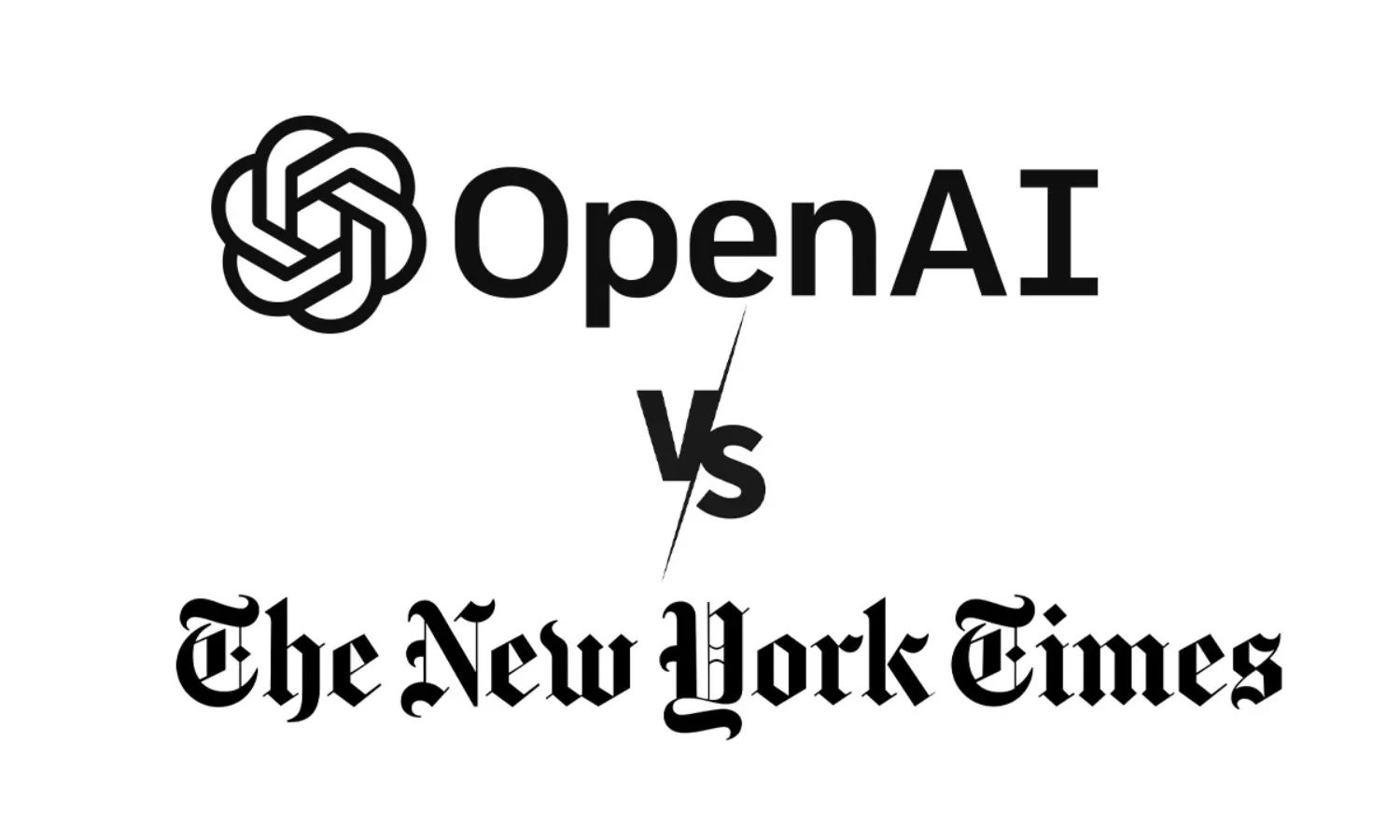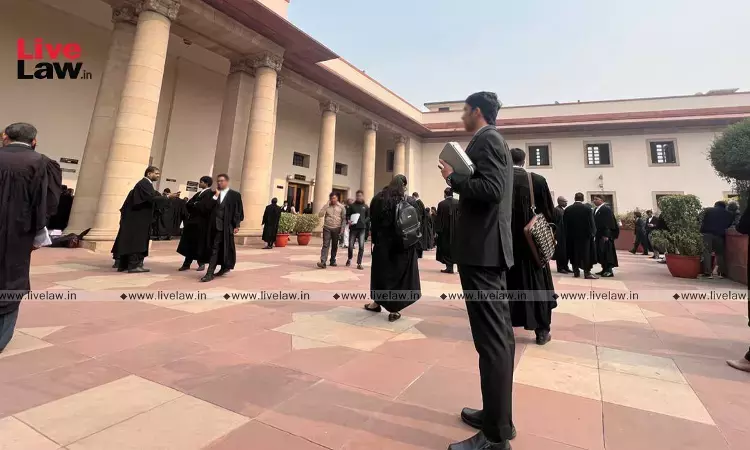OpenAI vs. The New York Times: A Pioneering Legal Battle Over AI and Copyright

The inception of the legal skirmish between OpenAI and The New York Times took root in late December 2023, when The New York Times took a bold step by filing a lawsuit against OpenAI and Microsoft. This marked a significant escalation in the ongoing discussions about the use of copyrighted material to train advanced artificial intelligence technologies, including the widely utilized...
The inception of the legal skirmish between OpenAI and The New York Times took root in late December 2023, when The New York Times took a bold step by filing a lawsuit against OpenAI and Microsoft. This marked a significant escalation in the ongoing discussions about the use of copyrighted material to train advanced artificial intelligence technologies, including the widely utilized ChatGPT
The essence of the contention is the allegation that such application not only infringes upon copyright statutes but also renders these AI platforms as direct adversaries to The New York Times in the realm of delivering trustworthy information, a sector historically occupied by journalistic organisations. The lawsuit particularly focuses on the training of large language models (LLMs). This legal confrontation sheds light on the nuanced and often complex legalities surrounding the use of copyrighted materials for developing and refining AI technologies
Understanding Large Language Models (LLMs)
Large Language Models, such as ChatGPT developed by OpenAI, are advanced AI systems designed to understand, generate, and interact with human language in a way that mimics understanding. LLMs are trained on vast datasets compiled from the internet, encompassing everything from books and articles to websites and social media posts. This training enables LLMs to generate responses that are coherent, contextually relevant, and often indistinguishable from those that a human might produce.
Background on ChatGPT and Generative AI Training
ChatGPT, one of the most widely recognized LLMs, exemplifies the capabilities of AI in processing and generating human language. The model is trained through a technique known as unsupervised learning, where it is fed large amounts of text data. The model learns language patterns, grammar, facts about the world, and even styles of writing from this data, without specific guidance on what to learn. This training involves processing copyrighted materials, raising significant legal questions about copyright infringement and fair use.
This case hinges on the claim that the unauthorized incorporation of The Times's copyrighted content in AI chatbot training constitutes a competitive infringement on journalistic work. The Times seeks substantial redress, demanding billions in damages and the discontinuation of its copyrighted material in AI model training, setting a precedent for future intersections of copyright law and artificial intelligence technology.
Chronology of Conflict: Key Events in the OpenAI vs. The New York Times Case
From Initial Allegations to Legal Actions: A Timeline
The heart of the dispute lies in the NYT's allegations that OpenAI, the creator of ChatGPT, and its partner, Microsoft, unlawfully utilized millions of its articles to train various AI technologies. This, according to the NYT, not only infringes on its copyrights but also poses a significant threat to the business model underlying independent journalism. The lawsuit was filed in the Federal District Court in Manhattan, marking a pivotal moment in the intersection of AI development and copyright law.
The Allegations
The New York Times claims that OpenAI and Microsoft engaged in "wide-scale copying from many sources," giving particular emphasis to NYT content in training their generative AI tools, such as Generative Pre-Trained Transformers (GPT). This action, according to the NYT, was a deliberate attempt to "free-ride on the Times's massive investment in its journalism," directly impacting its ability to monetize its own content.
Legal Arguments
The New York Times's Standpoint
- Copyright Infringement: The core of the NYT's lawsuit is the assertion that OpenAI and Microsoft's use of its copyrighted material to train AI models constitutes direct copyright infringement.
- Fair Use Doctrine: The NYT challenges the notion that such use of its content falls under the "fair use" provision, arguing that the defendants' actions do not transform the original material but rather exploit it for commercial gain.
OpenAI's Defense
- Fair Use: OpenAI contends that the unlicensed use of copyrighted material for AI training can be seen as a transformative use, potentially qualifying for protection under the fair use doctrine as outlined in Section 107 of the US Copyright Act of 1976.
This principle allows limited use of copyrighted material without permission for purposes such as criticism, comment, news reporting, teaching, scholarship, or research.
- Public Benefit: OpenAI emphasizes its support for journalism and its intent to work collaboratively with news organizations, suggesting that its actions serve a broader public interest. It stressed that its use of copyrighted works to train its technologies constituted fair use under the law, a stance that emphasizes the company's belief in AI's transformative potential for society, including the news industry.
The Turning Points: Legal Filings and Public Reactions
The case has drawn significant public attention and sparked discussions around copyright law, AI development, and the future of content creation. OpenAI's filing, seeking to dismiss some key elements of The New York Times's lawsuit, argues that ChatGPT is not a substitute for a subscription to the newspaper and challenges the method The New York Times used to gather evidence for its case. This move by OpenAI has added another layer to the legal battle, raising questions about the techniques employed by both parties in proving their claims.
The New York Times's legal filings have illuminated the specific instances where OpenAI's technologies allegedly reproduced the newspaper's content verbatim, pointing to a potential infringement of copyright law.
The consequences of this litigation transcend judicial confines, affecting the AI sector, copyright holders, and legal jurisprudence. As the case progresses, its resolution could serve as a pivotal benchmark in the application of copyright statutes within the domain of artificial intelligence, thereby guiding subsequent AI innovation and the safeguarding of intellectual property rights.
Legal Framework: Understanding the Applicable Laws
Copyright Law in the Digital Age: The Foundation of the Case
At its core, copyright law aims to protect the rights of creators by granting them exclusive rights to their works, thereby incentivizing innovation and creativity. This legal protection is codified in US's Copyright Act of 1976, which outlines the exclusive rights to reproduce, distribute, perform, and display copyrighted works.
In the digital age, the ease of copying and distributing content has posed significant challenges to enforcing these rights. Digital technologies allow for the effortless replication and dissemination of copyrighted material, often without the consent of the copyright holder. This has led to widespread issues such as digital piracy, affecting industries ranging from publishing to music and film. Furthermore, the advent of user-generated content platforms has blurred the lines between creators and consumers, complicating the traditional copyright framework.
The focus has shifted towards finding a balance that respects the rights of copyright holders while accommodating the realities of the digital environment and promoting access to creative works.
Fair Use Doctrine: A Central Argument in the Dispute
A pivotal aspect of copyright law, especially relevant in the context of AI and digital content, is the fair use doctrine. This legal principle allows the unlicensed use of copyright-protected works under certain conditions, providing a balance between the copyright holder's interests and the public's access to creative works. The fair use doctrine is codified in Section 107 of the Copyright Act,1976 which outlines four factors to be considered in determining whether a use constitutes fair use:
1. The purpose and character of the use, including whether such use is of a commercial nature or is for nonprofit educational purposes. Courts are more likely to find a use to be fair if it is non-commercial or educational. However, transformative uses, which add new expression or meaning to the original work, are also highly regarded under this factor.
2. The nature of the copyrighted work, with a distinction between more creative works (which are given more protection) and factual works (which are less protected).
3. The amount and substantiality of the portion used in relation to the copyrighted work as a whole. Both the qualitative and quantitative aspects of the used portion are considered.
4. The effect of the use upon the potential market for or value of the copyrighted work. This factor examines whether the use harms the original work's market or potential market.
The fair use doctrine plays a crucial role in cases involving AI, where copyrighted materials may be used for training purposes. The ability of AI technologies to transform or repurpose these materials into new creations can fall under the scrutiny of fair use, particularly when considering the transformative nature of the use and its impact on the market for the original works.
Lawsuit's Implications for Copyright and AI
Laws Associated with Generative AI Tools in the US
In the United States, while there are no unified federal law specifically governing AI tools like ChatGPT, several existing laws and legal frameworks can apply:
- Copyright Law: The cornerstone for addressing the use of copyrighted material in AI training. Under the U.S. Copyright Act, particularly the fair use doctrine (17 U.S.C. § 107), certain uses of copyrighted material may be permitted without the need for authorization, depending on factors like the purpose and character of the use, the nature of the copyrighted work, the amount and substantiality of the portion used, and the effect of the use on the potential market.
- Computer Fraud and Abuse Act (CFAA) (18 U.S.C. § 1030): Initially aimed at combating hacking, the CFAA could be relevant in cases where training data for AI is obtained through scraping or other methods that might contravene the terms of service of websites.
- Digital Millennium Copyright Act (DMCA) (17 U.S.C. § 512): Addresses digital copyright infringement, with provisions on safe harbors that could be pertinent to platforms hosting AI-generated content.
Additionally, the case could influence future legislative reforms, both in the U.S. and internationally, as policymakers strive to balance the rapid advancements in AI with the rights of copyright holders. In jurisdictions like the European Union and potentially India, where the legislations around AI is still forming, the principles established by this case could guide the development of laws that both foster innovation and protect intellectual property.
Setting Precedents: The Potential Legal Outcomes
The legal principles at stake include those enshrined in the Copyright Act of 1976, particularly Section 106, which outlines exclusive rights granted to copyright owners, and Section 107, which details the fair use doctrine.
The outcomes of this case could establish significant precedents regarding the balance between copyright protection and the burgeoning field of AI development. A ruling in favor of The New York Times could mandate a seismic shift in how AI companies approach the sourcing and utilization of data for training their models, potentially leading to the requirement for explicit permissions or licensing agreements with copyright holders.
Conversely, a ruling that finds the use of copyrighted material by AI technologies like ChatGPT falls under the fair use exemption could embolden AI developers to leverage vast swathes of online content for training purposes, catalysing further innovations in the field while raising concerns among content creators about the protection of their intellectual property.
Beyond the Courtroom: The Case's Impact on AI Development and Copyright Law
Independent of the courtroom's decision, the lawsuit between The New York Times and OpenAI carries implications that extend far beyond the legal domain, potentially influencing AI development practices, copyright law evolution, and the digital content scape at large.
Firstly, the case spotlights the critical need for clear legal frameworks that adequately address the nuances of AI technologies and their interaction with copyrighted works. It underscores the urgency for legislative updates or new copyright provisions tailored to the digital age, where AI's capability to digest and repurpose content challenges traditional notions of copyright infringement and fair use.
Furthermore, the lawsuit may catalyse a shift towards more transparent and cooperative relationships between AI developers and content creators. Whether through negotiated licensing agreements or partnerships, such collaborations could pave the way for a model that benefits both parties. For AI companies, access to high-quality, legally sourced data could enhance the capabilities and reliability of their technologies. For copyright holders, it presents new opportunities for monetization and exposure in the digital realm.
Moreover, this case serves as a bellwether for future disputes in the rapidly evolving intersection of technology and copyright law. It will likely inform policy discussions, shape industry standards, and influence public perceptions about the ethical use of copyrighted content in AI training processes.
The Global Perspective: Similar Legal Battles and International Copyright Law
The implications of this lawsuit extend beyond the United States, highlighting the global challenges of reconciling AI development with copyright laws. Countries around the world are grappling with similar issues, as the deployment of AI technologies often involves the processing of copyrighted materials across borders.
For instance, the European Union's Copyright Directive provides certain exceptions for text and data mining for research purposes, but the commercial use of copyrighted material for training AI systems remains a contentious issue.
In India, the legal framework around AI and copyright is still evolving. Indian copyright laws do not explicitly address the use of copyrighted works for training AI models. However, principles like the U.S. fair use doctrine, such as the concept of "fair dealing" for purposes such as research, criticism, and reporting, may offer some guidance.
The outcome of The New York Times vs. OpenAI lawsuit could influence legal discourse and policymaking in India and other countries, as they seek to balance the protection of intellectual property with the promotion of technological innovation.
The international tech community is closely watching this case, as its outcome may prompt lawmakers worldwide to update copyright legislations to better accommodate the unique challenges posed by AI. Whether through international treaties or individual country laws, the goal will be to create a legal environment that both encourages the advancement of AI technologies and ensures fair compensation and recognition for content creators.
The legal battle between OpenAI and The New York Times underscores a pivotal moment for copyright law, AI innovation, and journalistic integrity. With OpenAI asserting that their use of copyrighted content falls under fair use as per Section 107 of the U.S. Copyright Act, the dispute highlights the need for a balanced approach that respects both intellectual property rights and the potential of AI technologies. The New York Times' lawsuit brings to the forefront the challenges and implications of AI's consumption of copyrighted material, challenging the boundaries of fair use in the digital era.
In response, there is a pressing need for legislative reforms and the establishment of collaborative industry standards. Indian legislation, through principles under the Indian Copyright Act, 1957, particularly Sections 52 and 14(d), although not directly applicable, suggests a framework that balances innovation with copyright protection. This case advocates for a global consensus on AI and copyright law, urging stakeholders to work towards solutions that ensure AI's transformative potential is realized without infringing on creators' rights, paving the way for technology and creativity to thrive together.
The author is an Advocate at Supreme Court of India and views are personal.




